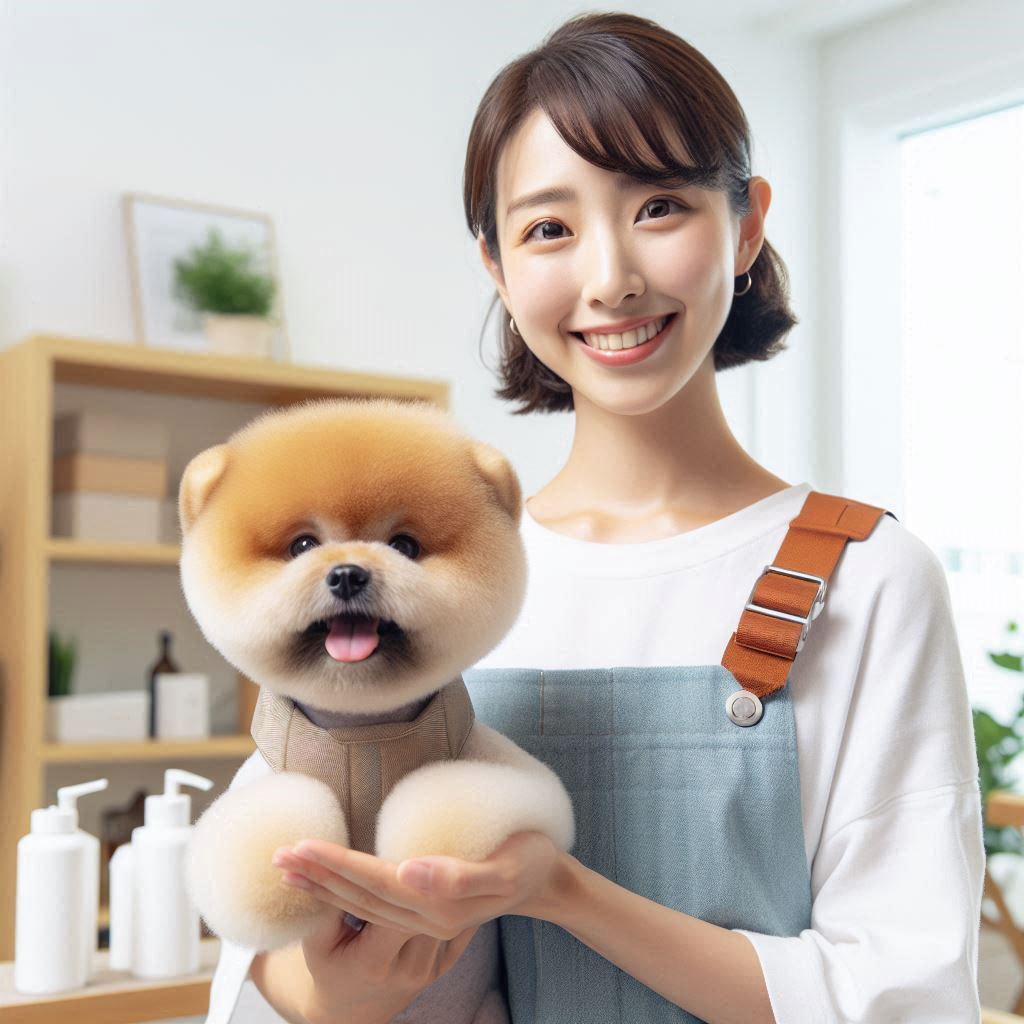Introduction
Pet grooming is essential for the health and well-being of our furry friends, but emergencies can arise unexpectedly during grooming sessions.
It is crucial for both pet owners and groomers to be prepared to handle any emergency situation that may occur.
Whether it’s a cut from scissors, an allergic reaction to grooming products, or a pet becoming agitated or aggressive, being equipped to handle emergencies can make all the difference in ensuring the safety and well-being of the pet.
Having a plan in place and being familiar with basic first aid procedures can help pet owners and groomers respond effectively in times of crisis, potentially saving the pet’s life or preventing further harm.
By being proactive and prepared for emergencies in pet grooming, pet owners and groomers can create a safer and more secure environment for our beloved pets while ensuring that grooming sessions remain a positive experience.
Identify Potential Risks and Hazards in Pet Grooming
Pet grooming involves various risks and hazards that groomers must identify and address.
Understanding these risks can prevent emergencies and ensure the safety of both pets and groomers.
Common risks such as cuts, burns, allergic reactions, and stress that pets may experience during grooming
Common risks include cuts, which can occur from sharp grooming tools.
Always use appropriate equipment and maintain sharpness to minimize accidents.
Burns can happen if pets come into contact with hot water or heated tools.
Regularly check temperatures to avoid these incidents.
Allergic reactions are another concern.
Pets may be sensitive to grooming products like shampoos or conditioners.
Always perform a patch test before using new products.
Stress is common during grooming sessions, especially for anxious pets.
Recognizing signs of stress can help you adapt your approach and prevent escalated situations.
Examples of situations that could escalate into emergencies if not addressed promptly
Consider situations that could escalate into emergencies.
For instance, a pet may become aggressive if it feels threatened or uncomfortable.
If a pet reacts strongly to a grooming tool, it can cause injury.
Ensure pets are familiar with grooming tools before use.
Transform Your Career Today
Unlock a personalized career strategy that drives real results. Get tailored advice and a roadmap designed just for you.
Start NowThis can help reduce anxiety and potential aggression.
A sudden medical emergency, like a seizure or difficulty breathing, can occur during grooming.
Being aware of the pet’s health history can help you prepare for such situations.
If a pet shows distress, such as excessive panting or trembling, it‘s crucial to stop the grooming session immediately.
Implementing safety protocols can significantly reduce risks.
Ensure all groomers are trained in first aid and emergency response.
Keep emergency contact information accessible for veterinary services.
By identifying and addressing these potential risks, groomers can create a safer environment.
Proactive measures will help prevent emergencies and ensure a positive grooming experience for pets and their owners.
Always prioritize safety in every grooming session.
Read: Steps to Become a Professional Pet Groomer in the USA
Establish Emergency Protocols
Handling emergencies in pet grooming requires clear protocols.
First, outline specific steps for emergencies, ensuring every team member understands them.
Steps to Take in Case of Emergencies
Begin by identifying the types of emergencies that may occur.
These can include allergic reactions, cuts, or sudden illness.
Create a checklist of actions to take for each scenario.
In case of an emergency, the first step is to remain calm.
Reassure the pet to reduce stress for both the animal and yourself.
Next, assess the situation quickly to determine the severity of the issue.
If a pet appears injured or unwell, contact a veterinarian immediately.
Transform Your Career Today
Unlock a personalized career strategy that drives real results. Get tailored advice and a roadmap designed just for you.
Start NowKeep a list of local veterinarians and emergency animal clinics handy.
This list should include contact numbers and addresses.
Instruct your team to assist the pet gently while waiting for help.
They should avoid any actions that could worsen the situation.
If the pet is experiencing a severe allergic reaction, be prepared to administer basic first aid, if trained to do so.
Importance of a First Aid Kit
A well-stocked first aid kit is essential in a grooming area.
This kit should include bandages, antiseptics, and tools to assist with minor injuries.
Regularly check the kit to ensure supplies are up to date.
Train your staff on how to use each item in the first aid kit.
Encourage them to familiarize themselves with basic first aid techniques.
This preparation can make a significant difference in emergency situations.
By establishing clear emergency protocols and maintaining a first aid kit, you can ensure a safer grooming environment.
Preparedness helps protect both pets and staff during unexpected situations.
Always prioritize the health and safety of the animals in your care.
Read: Finding the Right Work-Life Balance as a Nail Tech
Proper Handling and Restraint Techniques
Handling pets safely during grooming is essential for their well-being and yours.
Proper handling techniques help prevent accidents and injuries.
Many pets become anxious or fearful during grooming, which can lead to unpredictable behavior.
Understanding how to manage this anxiety is crucial.
Importance of Proper Handling and Restraint Techniques
Using proper handling and restraint techniques is vital for both pet and groomer safety.
Transform Your Career Today
Unlock a personalized career strategy that drives real results. Get tailored advice and a roadmap designed just for you.
Start NowAnxious pets may struggle or attempt to escape, potentially causing harm to themselves or others.
Effective handling builds trust between the pet and groomer.
This trust ensures that the pet feels secure, making the grooming process smoother and safer.
Tips on Safely Restraining a Pet
When restraining a pet, always prioritize comfort and safety.
Use gentle, calming voice tones to reassure the animal.
Begin by introducing the grooming tools slowly, allowing the pet to familiarize itself with the environment.
Consider using a grooming table with a non-slip surface to keep the pet secure.
For small pets, use a soft grooming restraint loop to secure them without applying too much pressure.
For larger pets, consider a well-fitted muzzle if they show signs of aggression or fear.
Ensure that the muzzle allows for panting and drinking.
Never use physical force to restrain a pet.
Instead, apply gentle pressure to guide them into position.
If a pet struggles, pause and give them a moment to relax before proceeding.
Providing breaks during grooming helps maintain a calm environment.
Monitor the pet‘s body language closely.
Signs of stress, such as panting or growling, indicate a need to reassess your approach.
Proper restraint and handling techniques not only ensure safety but also enhance the grooming experience.
By respecting the pet’s comfort level, you can build a positive relationship, fostering trust and cooperation.
Read: How to Create a Pet-Friendly Grooming Environment
Recognizing Signs of Distress
When grooming pets, it‘s vital to recognize signs of distress.
Transform Your Career Today
Unlock a personalized career strategy that drives real results. Get tailored advice and a roadmap designed just for you.
Start NowUnderstanding these signs helps ensure a safe experience for both the pet and the groomer.
Common Signs of Distress
Pets may show various signs of distress during grooming.
Rapid breathing is one common indication.
This can suggest anxiety or discomfort, especially in unfamiliar environments.
Excessive panting often accompanies rapid breathing.
While panting can be normal, excessive panting may indicate stress or overheating.
Groomers should monitor pets closely for this sign.
Vocalization is another key indicator.
Pets may whine, growl, or yelp when uncomfortable.
These vocalizations often signal that the pet is experiencing fear or pain.
Additionally, changes in body language are important.
A pet may tense its body, attempt to escape, or freeze in place.
These behaviors often indicate high stress levels and should not be ignored.
Differentiating Between Normal Grooming Discomfort and Potential Emergencies
It‘s essential to distinguish between normal grooming discomfort and signs of a potential emergency.
Some pets may exhibit minor discomfort during grooming, which is often normal.
For example, slight squirming or mild vocalizations can occur without indicating serious distress.
However, groomers should assess the severity of these behaviors.
If a pet shows prolonged signs of discomfort, such as continuous whining or excessive attempts to escape, it may indicate a deeper issue.
Another red flag is the sudden onset of distressing behaviors.
If a previously calm pet suddenly shows signs of panic, this may indicate an emergency.
Transform Your Career Today
Unlock a personalized career strategy that drives real results. Get tailored advice and a roadmap designed just for you.
Start NowChanges in breathing patterns, increased heart rate, or even sudden aggression can signify that something is wrong.
By recognizing these signs of distress, groomers can take appropriate action.
This may involve stopping the grooming session, calming the pet, or seeking veterinary assistance if necessary.
Always prioritize the pet’s well-being to ensure a positive grooming experience.
Read: Nail Technician Networking: Building Industry Connections

Responding to Common Emergencies in Pet Grooming
Handling emergencies in pet grooming requires quick thinking and calm actions.
Understanding how to respond to common emergencies is essential for every groomer.
Handling Cuts
- Stay Calm: Assess the situation calmly to avoid alarming the pet.
- Control Bleeding: Apply gentle pressure to the cut with a clean cloth or gauze.
- Clean the Wound: Rinse the area with lukewarm water to remove debris.
- Apply Antiseptic: Use a pet-safe antiseptic solution to prevent infection.
- Bandage if Necessary: If the cut is deep, bandage it lightly but securely.
Managing Burns
- Identify the Burn: Determine if the burn is minor or severe.
Minor burns can be treated at home. - Cool the Area: Use cool (not cold) water to soothe the burn for about 10-15 minutes.
- Apply Aloe Vera: Aloe vera gel can help soothe minor burns and promote healing.
- Prevent Licking: Use an Elizabethan collar if the pet tries to lick the area.
- Seek Help: For severe burns, seek immediate veterinary attention.
Addressing Allergic Reactions
- Identify Symptoms: Look for signs such as swelling, itching, or difficulty breathing.
- Remove the Allergen: Immediately stop using the grooming product causing the reaction.
- Administer Antihistamine: If appropriate, give a pet-safe antihistamine after consulting a vet.
- Monitor the Pet: Keep a close eye on the pet for worsening symptoms.
- Emergency Care: If breathing issues occur, seek emergency veterinary care right away.
When to Seek Professional Help
Always consult a veterinarian if you‘re unsure about the severity of an injury or reaction.
If the pet exhibits persistent symptoms, such as excessive bleeding or difficulty breathing, prioritize immediate veterinary care.
Quick responses can save a pet‘s life.
Being prepared ensures you can handle emergencies effectively while keeping pets safe.
Stress Management Techniques
Grooming can be a stressful experience for pets.
Therefore, managing their stress is crucial to prevent emergencies during grooming sessions.
Here are effective techniques to help pets relax.
Ways to Help Pets Relax
Start by creating a calming environment.
Ensure the grooming area is quiet and free from distractions.
Use soft, indirect lighting to create a soothing atmosphere.
Allow pets to explore the space before grooming begins.
This familiarization can help reduce anxiety.
Introduce pets to grooming tools gradually.
Transform Your Career Today
Unlock a personalized career strategy that drives real results. Get tailored advice and a roadmap designed just for you.
Start NowShow them brushes, clippers, and other equipment before use.
Let them sniff and investigate these items.
This will build their confidence and comfort.
Incorporate short breaks during grooming.
Give pets time to relax, especially if they seem overwhelmed.
Use these breaks to offer gentle pets and reassuring words.
This helps them feel secure throughout the session.
Techniques Such as Aromatherapy
Aromatherapy can be beneficial for calming pets.
Use essential oils such as lavender or chamomile, known for their relaxing properties.
Diffuse these scents in the grooming area or apply them to a bandana around the pet’s neck.
Ensure the oils are pet-safe to avoid adverse reactions.
Soothing Music
Playing soothing music can help reduce stress during grooming.
Select calming tunes or nature sounds that create a peaceful environment.
Studies show that music can lower heart rates and promote relaxation in pets.
Positive Reinforcement
Utilize positive reinforcement to encourage good behavior.
Reward pets with treats, praise, or toys during grooming.
This helps them associate grooming with positive experiences.
Gradually, they will become more comfortable and relaxed during sessions.
By implementing these stress management techniques, groomers can create a more pleasant experience for pets.
A calm pet is less likely to experience emergencies. Prioritizing stress reduction ensures safety and promotes a positive grooming environment.
Transform Your Career Today
Unlock a personalized career strategy that drives real results. Get tailored advice and a roadmap designed just for you.
Start NowTraining and Education for Groomers
The importance of groomers receiving proper training in pet first aid and emergency response
Proper training in pet first aid and emergency response is vital for every groomer.
Grooming environments can be unpredictable, with potential emergencies arising at any moment.
Groomers equipped with first aid knowledge can respond swiftly to injuries, allergic reactions, or sudden health issues.
Their quick actions can save lives and reduce the severity of injuries.
Furthermore, understanding emergency protocols builds groomers‘ confidence in their abilities, enhancing their professional skills.
Certification programs and workshops provide groomers with essential emergency response skills.
Various organizations offer specialized training in pet first aid, CPR, and emergency handling.
These programs often include hands-on practice, allowing groomers to apply their knowledge effectively.
Additionally, courses often cover topics such as recognizing common health issues in pets and safe handling techniques during emergencies.
Recommended certification programs or workshops that focus on handling emergency situations in pet grooming
The American Red Cross, for instance, offers pet first aid certification.
This course teaches essential skills, including how to perform CPR on pets and manage injuries.
Groomers who complete this certification demonstrate their commitment to pet safety and well-being.
Similarly, the Pet Tech program offers comprehensive training focused on emergency response and first aid techniques specifically for pets.
Workshops organized by local grooming schools or veterinary clinics can also be beneficial.
These workshops often cover practical scenarios groomers may encounter.
They allow participants to engage in simulated emergency situations, enhancing their readiness.
Networking with other professionals during these sessions can also foster a supportive community.
Investing time in training and education is crucial for groomers.
By participating in certification programs and workshops, groomers can provide safer environments for pets.
Well-trained groomers contribute to better outcomes in emergency situations.
Transform Your Career Today
Unlock a personalized career strategy that drives real results. Get tailored advice and a roadmap designed just for you.
Start NowThis proactive approach not only protects pets but also enhances the groomer’s professional reputation and confidence.
Learn More: Balancing Speed and Accuracy in Service Data Entry
Conclusion
As a pet groomer, it’s crucial to be prepared for any unexpected emergencies that may occur while working with animals.
First and foremost, remain calm in any emergency situation to effectively assess and address the issue at hand.
Quickly evaluate the pet’s condition to determine the severity of the emergency and the necessary course of action.
If needed, contact the pet owner, a veterinarian, or emergency services for assistance in handling the situation.
Always have a fully stocked first aid kit readily available to address minor injuries or stop bleeding in emergencies.
Learn pet CPR techniques to perform life-saving measures in case a pet stops breathing or goes into cardiac arrest.
Handle the pet gently and support their body properly, especially if they are injured or in distress.
Being prepared for emergencies in pet grooming is essential for the safety of both pets and groomers.
It’s important to prioritize safety and have a well-thought-out plan in place to handle any potential emergencies that may arise.
Remember, staying calm, assessing the situation, and having the necessary tools and knowledge can make a significant difference in a crisis.




